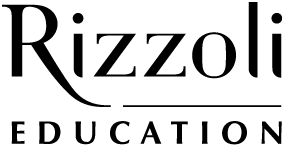Making Learning and Thinking Visible (MLTV) is an approach to education that emphasizes the importance of making thinking visible in the learning process. Developed by researchers at Harvard’s Project Zero, including David Perkins, Ron Ritchhart, and Shari Tishman, the theory is based on six main pillars, which are:
- Understanding: This pillar emphasizes the importance of developing a deep and meaningful understanding of the concepts and ideas being studied. It involves developing a conceptual framework that allows students to make connections between different ideas and apply their understanding in new situations.
- Engaging: This pillar emphasizes the importance of engaging students in the learning process. It involves creating a learning environment that is interactive, collaborative, and challenging, and that encourages students to take ownership of their learning.
- Reflecting: This pillar emphasizes the importance of reflecting on the learning process. It involves encouraging students to think about their thinking, to identify their strengths and weaknesses, and to develop strategies for improving their learning.
- Questioning: This pillar emphasizes the importance of asking good questions. It involves encouraging students to ask questions that are open-ended, thought-provoking, and that challenge assumptions.
- Listening: This pillar emphasizes the importance of active listening. It involves teaching students to listen carefully to others, to consider different perspectives, and to engage in respectful dialogue.
- Sharing: This pillar emphasizes the importance of sharing ideas and perspectives. It involves creating opportunities for students to share their thinking with others, to receive feedback, and to collaborate on projects and assignments.
“True understanding” in the context of the Visible Thinking and Learning theory refers to a deep and meaningful understanding of the concepts and ideas being studied. It involves more than just memorizing facts and figures; it involves developing a conceptual framework that allows students to make connections between different ideas, to apply their understanding in new situations, and to think critically and creatively about the world around them.
In order to help students (and teachers) develop this capability, Thinking Routines are used in the everyday teaching and learning practice. These are cognitive strategies designed to promote metacognition and critical thinking which encourage learners to engage in active thinking by prompting them to ask questions, make connections, and reflect on their thought processes. They are based on the idea that thinking is a skill that can be taught and developed, and that metacognition is essential to effective learning. Through a methodical use of Thinking Routines, learners are able to develop their ability to think deeply and critically about complex ideas.

Are you wondering how you can use thinking routines in class? Here are some examples:
1. LITERATURE
Taken from our new literature coursebook that will be published next year]:
You can use thinking routines such as “See, Think, Wonder” to introduce the historical and social context of a specific period.
The thinking routine “See, Think, Wonder” allows students to carefully consider not only what they’re observing, but also what those observations mean.
The new literature coursebook gives space to various thinking routines to help students understand, focus, summarize and connect topics and authors.
2. LANGUAGE
The thinking routine “Word, Phrase, Sentence” helps students make meaning from a text.
https://pz.harvard.edu/sites/default/files/Word-Phrase-Sentence.pdf
For further examples watch this webinar.


